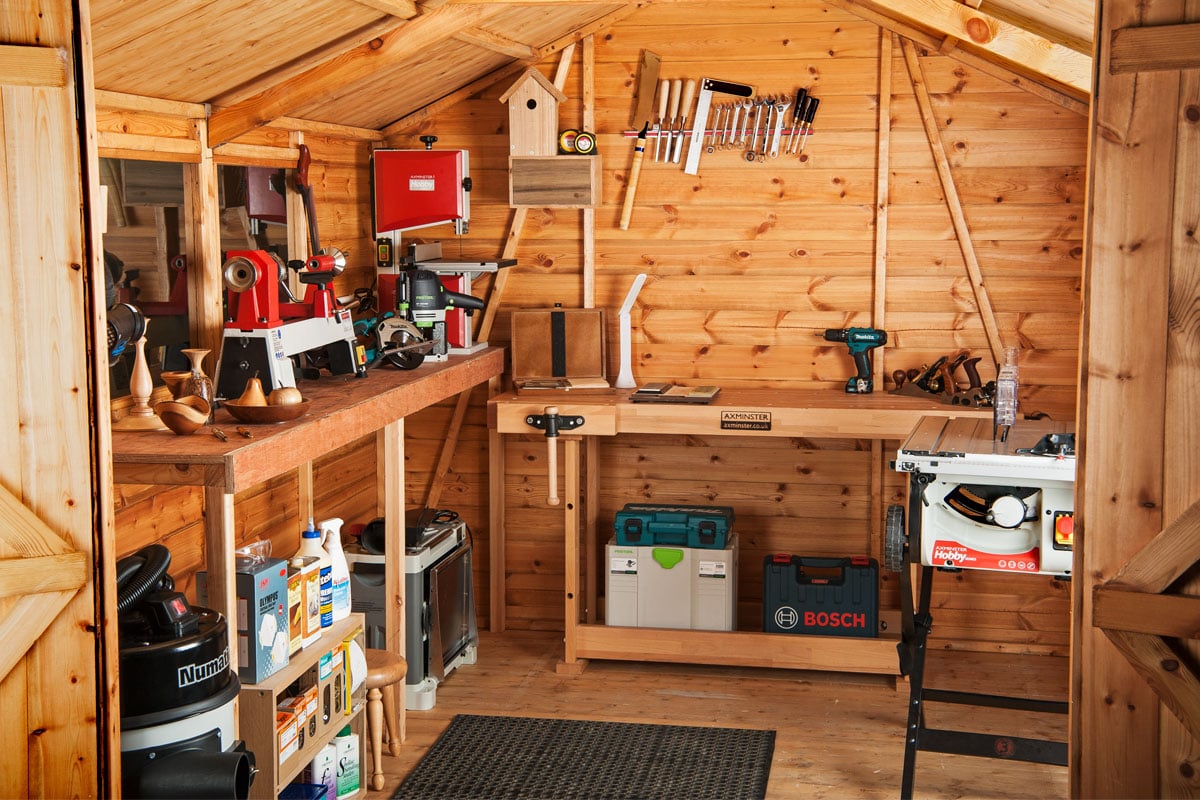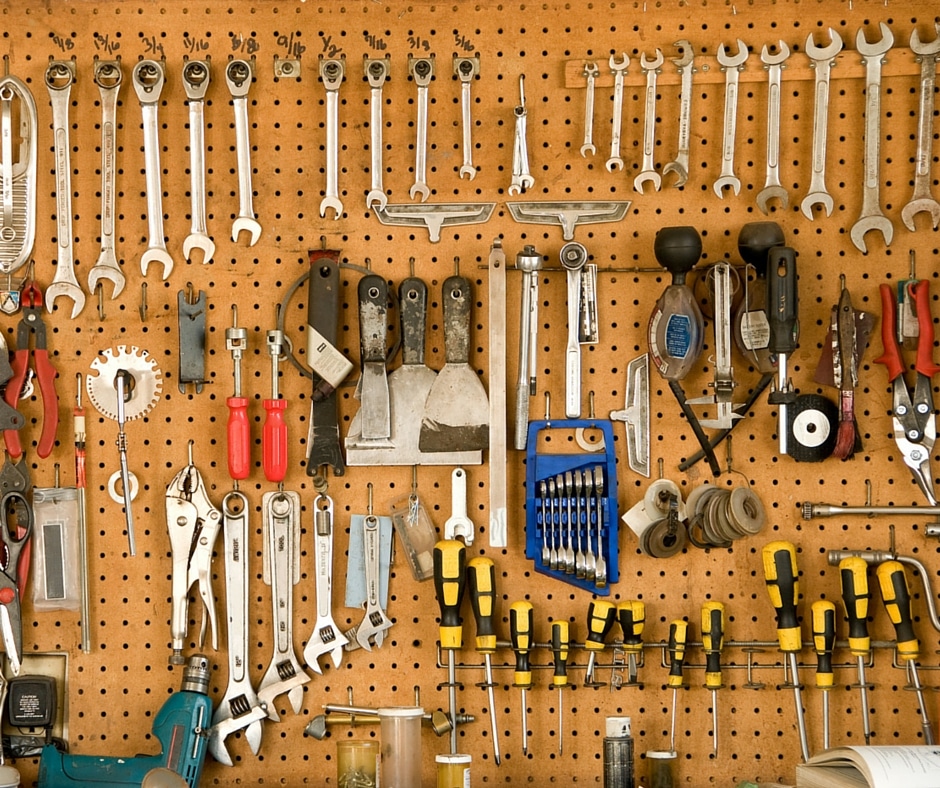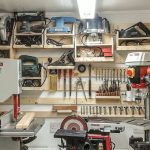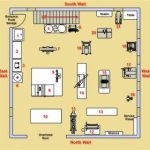Setting up a workshop in a small space requires efficient organization and maximizing available storage solutions. Utilize vertical space and multifunctional furniture to optimize the area.
When planning the layout, consider workflow and accessibility to tools and materials. Additionally, ensure proper lighting and ventilation to create a comfortable and safe working environment. With these strategies, you can create a functional workshop in even the smallest of spaces.
Introduction To Small Space Workshops
Discover the art of setting up a workshop in a small space through our Small Space Workshops. Gain valuable insights and practical tips to optimize your limited workspace and maximize productivity without compromising on efficiency. Start transforming your small space into a functional workshop today!
If you’re passionate about woodworking, metalworking, or other crafts, you may be wondering how to set up a workshop in a small space. Limited space can be a challenge, but it’s not impossible to create a dedicated workspace that’s functional, efficient, and enjoyable to work in. In this post, we’ll explore the benefits of having a dedicated workspace and the challenges you may face when working in a small area.Benefits Of A Dedicated Workspace
Having a dedicated workspace offers numerous benefits that can help you maximize productivity and creativity. Here are some of the benefits of having a dedicated workspace:- Improved organization: With a dedicated workspace, you can keep your tools and materials organized and easily accessible. This can save you time and reduce frustration when searching for the right tool or material.
- Increased productivity: When you have a dedicated workspace, you can focus on your work without distractions. This can help you work more efficiently and get more done in less time.
- Enhanced creativity: A dedicated workspace can be an inspiring environment that encourages creativity and experimentation. You can customize the space to suit your needs and preferences, which can help you feel more comfortable and motivated.
- Reduced safety risks: When you have a dedicated workspace, you can store your tools and materials safely and securely. This can reduce the risk of accidents and injuries.
Challenges Faced In Limited Areas
Working in a small space can present some challenges, but with some creativity and planning, you can overcome them. Here are some of the challenges you may face when setting up a workshop in a small space:- Limited storage: With limited space, you may not have enough room to store all of your tools and materials. This can make it difficult to stay organized and work efficiently.
- Limited work surface: In a small workspace, you may not have enough room for a large work surface. This can make it challenging to work on larger projects or multiple projects at once.
- Limited ventilation: Depending on the type of work you do, you may need proper ventilation to ensure your safety and comfort. A small space may not have adequate ventilation, which can be a safety hazard.
- Limited lighting: Proper lighting is essential for any workspace, but a small space may not have enough natural light or electrical outlets to provide adequate lighting.

Credit: www.youtube.com
Choosing The Right Location
Selecting the right location is crucial when setting up a workshop in a small space. Consider factors like accessibility, ventilation, and noise levels before finalizing your decision. With careful planning, you can optimize your workspace and achieve efficient results.
When setting up a workshop in a small space, choosing the right location is crucial. Assessing your space options, considering light and power sources, and optimizing the available area will help you create an efficient and functional workshop. Let’s dive into each aspect:
Assessing Your Space Options
To begin, assess the available space in your small workshop. Take measurements of the area to determine the exact dimensions you have to work with. Consider the layout of the space and identify any potential obstacles or limitations, such as low ceilings or narrow doorways. This assessment will help you plan the layout of your workshop and ensure that you make the most of the available space.
Considering Light And Power Sources
When choosing a location for your workshop, it’s essential to consider the availability of natural light and power sources. Natural light can greatly enhance visibility and create a more pleasant working environment. Look for windows or skylights that can provide ample daylight. Additionally, ensure that your workshop has sufficient electrical outlets to power your tools and equipment. If necessary, consider installing additional outlets or using extension cords to accommodate your needs.
Moreover, it’s important to position your workbenches and workstations in a way that allows for easy access to power sources. This will minimize the need for long cords and reduce the risk of tripping or tangling hazards.
Creating a well-lit and adequately powered workshop will not only improve your productivity but also contribute to a safer working environment.
If you find that the available natural light is insufficient, consider investing in appropriate lighting fixtures. LED lights, for example, are energy-efficient and provide bright, focused illumination. By choosing the right lighting solutions, you can optimize your workspace and ensure that you can see your projects clearly.
When it comes to power sources, it’s crucial to ensure that your electrical setup can handle the electrical demands of your workshop. Consult with a qualified electrician to assess the capacity of your existing electrical system and make any necessary upgrades to meet your needs.
By carefully considering light and power sources, you can create a workshop that is well-equipped and conducive to your work.
Maximizing Vertical Space
When setting up a workshop in a small space, maximizing vertical space is crucial for efficient organization and functionality. By utilizing the walls and vertical areas, you can create a well-organized and productive workshop without cluttering the limited floor space.
Installing Shelves And Wall Organizers
Installing shelves and wall organizers is an excellent way to maximize vertical space in a small workshop. Utilize sturdy brackets and anchors to securely mount shelves to the walls. Consider adjustable shelving units to accommodate various tool sizes and containers, keeping frequently used items within easy reach.
Using Pegboards For Tool Storage
Using pegboards for tool storage is a smart solution for small workshops. Mount a pegboard on a wall and utilize hooks, bins, and holders to keep tools organized and easily accessible. This method not only saves space but also provides a visual inventory of your tools, making it easier to locate and retrieve specific items.

Credit: www.axminstertools.com
Workbench Essentials
Create a functional workshop in a limited space with these workbench essentials. Maximize your small area by organizing tools and materials efficiently, and invest in versatile, compact workbenches and storage solutions. With careful planning, you can set up a productive workshop even in a small space.
Designing A Multi-functional Workbench
When it comes to setting up a workshop in a small space, designing a multi-functional workbench is essential. A well-designed workbench can maximize the efficiency of your workspace and provide you with the necessary tools and storage solutions. To design a multi-functional workbench, consider the following factors:- Size: Opt for a compact workbench that fits well in your small space.
- Sturdiness: Ensure the workbench is sturdy enough to handle various tasks.
- Storage: Incorporate drawers, shelves, or pegboards to keep your tools organized.
- Flexibility: Design the workbench in a way that allows for different types of tasks, such as woodworking, crafting, or repairs.
Foldable And Extendable Workbench Options
In a small workshop, it’s essential to make the most of the available space. Foldable and extendable workbench options are ideal solutions that allow you to save space when not in use. These workbenches can be easily folded or extended, providing you with a larger workspace when needed. Consider the following foldable and extendable workbench options:- Wall-Mounted Workbench: A wall-mounted workbench can be folded up against the wall when not in use, freeing up valuable floor space.
- Collapsible Workbench: A collapsible workbench can be folded down into a compact size, making it easy to store in a small workshop.
- Extendable Workbench: An extendable workbench allows you to increase the size of your workspace when working on larger projects.
Tool Storage Solutions
When setting up a workshop in a small space, effective tool storage solutions are essential for maximizing the available area and maintaining a tidy work environment. Implementing the right tool storage solutions not only saves space but also ensures that tools are easily accessible when needed. Let’s explore some innovative ideas for tool storage in small workshops.
Magnetic Strips For Metallic Tools
Magnetic strips are a versatile and space-saving option for organizing metallic tools in a small workshop. By affixing these strips to the walls or inside cabinet doors, you can keep frequently used tools within arm’s reach while freeing up valuable workbench space. This solution is ideal for items such as screwdrivers, wrenches, and pliers, allowing you to quickly grab the required tool without rummaging through cluttered drawers.
Custom Tool Holders For Efficiency
Custom tool holders are a practical way to optimize space and maintain an efficient workflow in a compact workshop. Designing custom holders tailored to the specific dimensions of your tools ensures a snug fit, preventing unnecessary movement and potential damage. Utilizing vertical storage options, such as pegboards or wall-mounted racks, helps to keep tools neatly organized while minimizing the footprint within the workshop. This approach not only enhances accessibility but also contributes to a more streamlined and productive working environment.

Credit: www.linkedin.com
Organizing Materials And Supplies
Efficiently organizing materials and supplies in a small workshop is crucial for productivity. Utilize smart storage solutions to maximize space and keep everything easily accessible.
Labeling Systems For Easy Identification
Implement clear labeling systems for quick and hassle-free identification of tools and supplies.
Using Clear Bins For Visibility
Opt for clear bins to enhance visibility and make it easy to locate items at a glance.
Making Use Of Mobile Units
Benefits Of Casters For Easy Movement
Portable workshop units with casters provide flexibility for rearranging layout quickly.
Modular Furniture For Flexible Layouts
Modular furniture allows for adjusting workshop setup based on project needs.
Incorporating Smart Technology
Incorporating smart technology can help optimize a small workshop space. Using tools such as smart lighting, temperature control, and storage solutions can improve efficiency and productivity.
Apps For Inventory Management
In a small workshop, efficient inventory management is crucial. Utilize apps for easy tracking of tools and materials. Consider using apps like Sortly or Stock Control for streamlined organization.Automated Solutions For Space Constraints
Maximize your small workshop space with automated solutions. Implement smart storage systems and compact tools for optimal space utilization. Incorporate smart technology in your workshop to enhance productivity and efficiency.Safety Considerations
Ensure safety in your small workshop by organizing tools efficiently and keeping walkways clear. Install proper lighting and ventilation for a secure and comfortable working environment. Consider fire extinguishers and first aid kits for added safety measures.
Securing Heavy Items To Prevent Accidents
In a small workshop, secure heavy items properly to avoid accidents. Use wall-mounted racks for heavy tools. Ensure shelves are sturdy and well-anchored. Use safety straps or brackets for additional security.Adequate Lighting And Ventilation
Good lighting is crucial in a small workshop. Install bright LED lights for clear visibility. Ensure proper ventilation to reduce fumes and dust. Use a small fan or air purifier if needed.Maintaining A Clutter-free Environment
Maintaining a clutter-free environment is crucial when setting up a workshop in a small space. A tidy workspace not only improves efficiency but also enhances safety and reduces stress. Here are some strategies to keep your small workshop organized:
Regular Clean-up Routines
Implementing regular clean-up routines is essential to prevent clutter from accumulating. Set aside time at the end of each work session to tidy up and put away tools and materials. A quick sweep and wipe down of surfaces will keep the workshop looking neat and organized.
The Importance Of A Designated Place For Everything
Having a designated place for each tool and material is key to maintaining a clutter-free workshop. Utilize pegboards, shelving units, and tool chests to create storage solutions that keep items off the floor and easily accessible. Labeling storage containers and drawers can help ensure that everything has its place.
Innovative Space-saving Tips
Setting up a workshop in a small space can be a challenge, but with some innovative space-saving tips, you can make the most of the limited area you have. Whether you’re a DIY enthusiast or a professional craftsman, optimizing your workshop layout is crucial for efficiency and productivity. In this section, we will explore some creative solutions to maximize your small workshop’s potential.
Diy Hacks For Workshop Optimization
When it comes to optimizing your workshop, DIY hacks can be a game-changer. These simple yet effective solutions can help you make the most of your limited space. Here are some ideas:
- Utilize vertical space: Install wall-mounted shelves, pegboards, or tool racks to keep your tools and equipment organized and easily accessible.
- Create multifunctional workstations: Invest in a workbench with built-in storage or add rolling cabinets underneath for extra storage.
- Make use of magnetic strips: Attach magnetic strips to the walls or underside of shelves to hold metal tools and keep them within reach.
- Repurpose everyday items: Transform old jars into storage containers for small parts or use a shoe organizer to store various tools.
Community Resource Sharing
Another innovative approach to optimizing your small workshop is by tapping into community resource sharing. By connecting with other craftsmen or makers in your area, you can share tools, equipment, and even workspace, making the most of limited resources. Here’s how you can benefit from community resource sharing:
- Join a local makerspace or workshop cooperative: These collaborative spaces provide access to a wide range of tools and equipment that you may not have space for in your own workshop.
- Participate in tool libraries: Some communities offer tool libraries where you can borrow specialized tools for a short period, reducing the need for storage in your workshop.
- Collaborate with fellow craftsmen: Connect with other craftsmen in your area and explore the possibility of sharing workspace, tools, or even splitting the cost of larger equipment.
By embracing the concept of community resource sharing, you not only optimize your workshop space but also foster a sense of camaraderie within the local maker community.
Conclusion: Embracing Your Small Workshop
Discover the beauty of optimizing your small workshop space to unleash creativity. Embrace the challenge with innovative storage solutions and multifunctional furniture. Maximize every inch to create a productive and inspiring workshop environment.
The Rewards Of A Well-organized Space
Organizing a workshop in a small space brings numerous rewards. Maximizing the available area enhances efficiency and boosts productivity. By keeping tools and materials in order, you can reduce time spent searching for items, allowing you to focus on the task at hand. A well-organized space also promotes safety, preventing accidents and minimizing clutter.
Continuous Improvement And Adaptation
In a small workshop, continuous improvement and adaptation are crucial. Embracing the concept of Kaizen, or continuous improvement, enables you to refine your space over time. As your needs evolve, remain open to rearranging and optimizing the layout. This mindset ensures that your small workshop remains functional and tailored to your workflow.
Embracing your small workshop means making the most of the space you have. By organizing efficiently and embracing adaptability, you can transform your small workshop into a productive and inspiring environment.
Frequently Asked Questions
How Can I Maximize Space In A Small Workshop?
To maximize space in a small workshop, consider using wall-mounted storage solutions, multi-functional furniture, and organizing tools vertically. Utilize the ceiling for storage and keep the workspace clutter-free by regularly decluttering and organizing.
What Are The Essential Tools For A Small Workshop Setup?
Essential tools for a small workshop setup include a compact table saw, cordless drill, versatile workbench, hand tools like screwdrivers and pliers, and a good quality dust collection system. Choose tools that serve multiple functions to save space.
How Do I Create A Functional Layout In A Small Workshop?
Creating a functional layout in a small workshop involves careful planning to optimize the use of space. Consider workflow efficiency, tool placement, and designated work zones. Utilize mobile workstations for flexibility and ensure adequate lighting for a productive workspace.
What Are Some Space-saving Storage Solutions For A Small Workshop?
Space-saving storage solutions for a small workshop include magnetic tool strips, pegboards, stackable bins, and modular shelving units. Utilize under-utilized spaces such as the back of doors and vertical wall space to maximize storage options. Regularly assess and reorganize to optimize space usage.
Conclusion
Setting up a workshop in a small space can be a challenging task, but it’s not impossible. With the right organization, tools, and mindset, you can create a functional and efficient workspace that meets your needs. Remember to prioritize safety, maximize storage, and use every inch of available space wisely.
By implementing these tips, you can make the most of your small workshop and enjoy a productive and fulfilling DIY experience.



